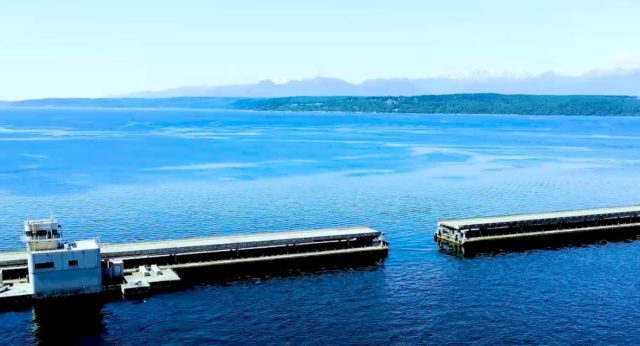
By Pepper Fisher
PORT ANGELES – Have you ever sat idling in your car while the Hood Canal Bridge span was open for one little pleasure craft, and wondered why it’s okay for someone in a sailboat to hold up traffic for up to an hour, sometimes with miles of backups in both directions? The short answer is, they have to.
“The bridge that we all use to travel across Hood Canal is subject to maritime law, and under this maritime law, WSDOT is required to yield the bridge. To get out of the way of boats. They have priority to get through. And, again, it seems very counterintuitive, but that is the law that we have to follow.”
That’s Doug Adamson from the Washington State Dept. of Transportation. That law goes back a long time. But it doesn’t let just anybody in a boat request a bridge opening. It’s only available to those too tall to fit under either of the elevated ends of the bridge. When a boater calls the bridge hotline to request an opening, they hear this.
“Federal regulation requires mariners to navigate under the trust bands of the State Route 104 Hood Canal Bridge whenever possible. Vertical clearance to the west truss is 31 feet. Vertical clearance to the east truss is 50 feet. Clearances will vary based on tides. Please stand by and you’ll be connected to an operator.”
Requesting an unneeded draw span opening is a reportable offense to the United States Coast Guard. Adamson says, this time of year, they’ll open the bridge around ten times a day on average, but that includes military and other openings as well. That number goes way down after boating season.
There’s another rule boaters have to follow. WSDOT has an agreement with the US Coast Guard to prevent drawspan openings during this, the busy season. From May 22 to Sept. 30 each year, private vessels are prohibited from requiring a drawspan opening from 3 to 6:15 p.m. daily, which is during the peak afternoon commute. The rule doesn’t apply to commercial and Department of Defense vessels. Adamson says getting that one rule change took a huge effort on the part of WSDOT.
Some have asked, “Has anyone thought about building a suspension bridge across the Hood Canal, eliminating the problem altogether?” That’s not likely. The bridge, from shoreline to shoreline, is about 7,800 feet long, well over a mile. In fact it’s the longest floating bridge over saltwater in the world. (For the record, the longest floating bridge in the world is the Evergreen Point Bridge, crossing Lake Washington from Seattle to Bellevue.) A Hood Canal suspension bridge would be much larger than the Tacoma Narrows Bridge, which collects tolls. That means a new suspension bridge that wouldn’t require a draw span would likely be one of the longest in the world, cost billions of dollars and take years to construct.
Use the DOT app or HoodCanalBridge.com to check the bridge’s status and know before you go.
